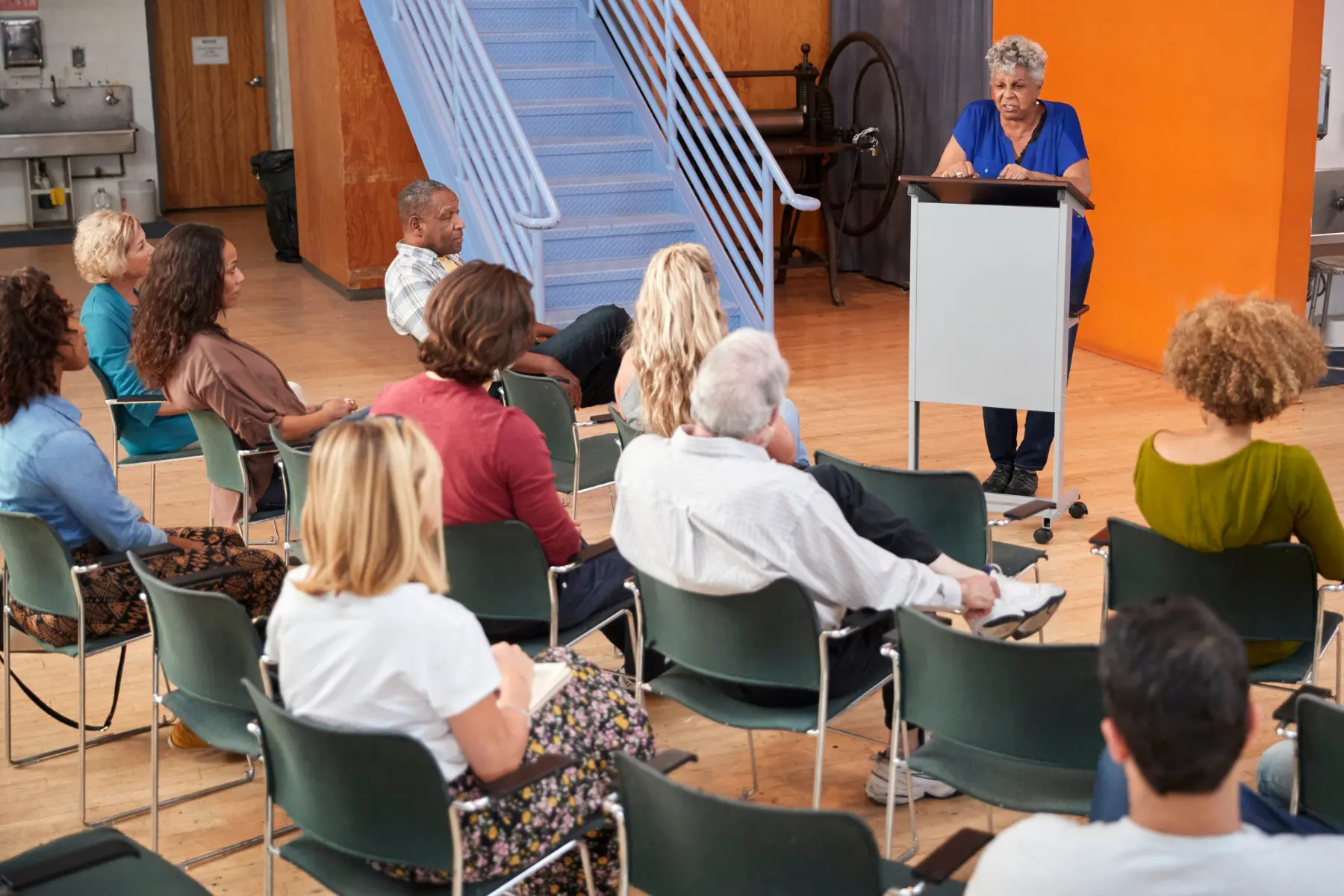
By Elizabeth Schuster, Environmental Economist
INTRODUCTION
In a project proposal, a colleague recently wrote, “We believe in the power of community stakeholders’ expertise and wisdom as expert consultants and culture brokers.”
The fact that this needed to be stated is indicative of the reality that it is not considered the norm.
Community expertise and wisdom cannot be duplicated by other design strategies and will be needed to solve top challenges around complex issues like food security, climate justice, and poverty. But when done hastily, it can lead to more harm than good.
A simple example comes from a workshop I attended:
The facilitator of the workshop designed the process to be fully community-led.
I was part of a breakout group that selected a neighborhood urban forestry project as the solution to the theme of the workshop.
At first, everything was collaborative and productive. Then, things went downhill. An older man started criticizing the executive director of an urban, community-based nonprofit — let’s call that executive director John. The older man accused John’s nonprofit of not having the capacity to implement the solution. To me this came across as unprofessional, as the older man had never met John before and was unfamiliar with John’s organization.
Then, a second challenge arose. A pair of two individual nonprofit professionals said, “This project is still too big. We can’t include everyone.” They recommended taking John’s organization off the project to make the overall project smaller, which they hoped would be more appealing to the funder. It happened so fast that afterwards, I wished that I had done more to keep John’s organization on the project.
I included this as a real example of how community-led solutions are messy, complex, and hard to implement in practice. Community-led solutions are crucial and at the same time, caution must be taken to ensure successful outcomes.
CONTEXT & MOTIVATION
I did a quick Google search and found many names for these types of processes. They are called “participatory design,” “community-led,” “stakeholder-driven,” or “co-creation of knowledge.” While it is true that each phrase has different nuances and applicability, for the purposes of this blog, the specific terms do not matter.
What matters is that nonprofits, funders, government agencies, universities and consultants have an opportunity to promote a shift to a more inclusive form of planning, where a wider diversity of community perspectives and voices are included in developing solutions to the challenges they face.
The following hard truths showcase the challenges — but also serve as examples of how we can do better and avoid common pitfalls.
8 HARD TRUTHS ABOUT COMMUNITY-LED SOLUTIONS
- In many cases, the phrase “community-led solutions” has been co-opted. Community-led does not mean that a small, vocal minority should be forcing through their perspective.
If a process is truly to be described as “community-led,” then it must include a more equitable and inclusive process to collect feedback from and synthesize findings across a wide diversity of stakeholders. It’s not truly a community-led solution if only a small group of neighbors are opposing an affordable housing project. I’ve seen affordable housing projects not go through because of false claims that it is “not what the community wants.” A disproportionate weight put on a small number of loud voices does not, in fact, reflect the community.
- Sometimes, going with the community-led solution means you must let go of controlling of the outcomes.
I remember reading a case study in grad school about a government agency who collected community feedback on an ecological restoration project for a lake. It was a unique example where the lead at the government agency did not think the solution that the community suggested would work — but he decided to try it anyway. What a powerful example of valuing community input, being willing to give them the benefit of the doubt, and testing something new! Because you know what? It builds trust, and what’s the worse that could happen when you give the community the benefit of the doubt?
- It causes harm to communities is if you keep reaching out to the same individuals and are not compensating them for their time and knowledge.
We see this happen a lot where it is literally the same individuals in a community that continue to be tapped for focus groups and planning sessions time and time again. This becomes a burden, where they are putting in significant labor and time and not fairly compensated for their knowledge. Paying participants is not feasible 100% of the time, but should be considered when you expect individuals from the community to contribute their knowledge, and especially when you are relying on underrepresented communities.
- It can also cause harm to communities if your organization chooses to initiate a process but does not follow up or follow through.
I saw an example of this with a one-day symposium that was hosted to generate community-driven solutions. The symposium was a success, but there was no follow through. When your organization or agency chooses to host a community workshop, you also take on the responsibility of building follow-up into your budget and timeline. I understand folks are busy, but even a simple follow up like a series of emails sharing action items or a suggestion for next steps on actions to take would make a difference.
- Going too fast is one of the most common reasons community-driven processes fail.
Going slower does not mean we need to put a halt on progress. It just means that probably two weeks is not enough for community engagement. For a more in-depth stakeholder-driven process, you likely need a few months. Having accurate expectations about how long the process will take makes it easier to plan, because then, there are fewer unexpected delays.
- Often what you initially think is the problem isn’t the real problem, and this means you risk not getting to the root causes of problems.
Often times, the first problem that is mentioned is not the root cause of the issue. It is just a symptom. This is another reason that these community engagement processes need active facilitation. Trained facilitators go deeper to diagnose underlying issues and understand the hidden causes of problems. And only by diagnosing the actual problem can communities develop solutions that work.
- Community-led solutions aren’t always collaborative, and this can lead to problems.
There’s almost an irony that we assume community-led processes are collaborative. But community members often exclude other groups or are actively opposed to partnering with certain organizations. There are power dynamics as well, and more weight is put on some voices than others. When we are talking about complex problems like food security and climate justice, these issues are too big to be solved by one group alone. Bringing together a mix of community groups and partner organizations can lead to better solutions with greater long-term impact.
- Avoiding government agencies in the process isn’t always a good idea.
It’s not uncommon that I hear a resistance to including government agencies in the process. I understand that there can be a distrust towards government that came from historic interactions, but sometimes government agencies are the funders and decision makers. Getting their buy-in to the process can lead to more support in the future.
CONCLUSION
These 8 hard truths are things you want to avoid if you want effective and equitable community-led solutions. But the good news is that when you ensure the right planning to avoid them —your organization is now one step closer to catalyzing transformative, community-led change.
To avoid those potential negative outcomes, it requires not only planning, but also equitable design and facilitation of the engagement process. This matters because only through engaging communities can you achieve a world with equitable access to food, climate justice, better quality of life, and a more sustainable future.





